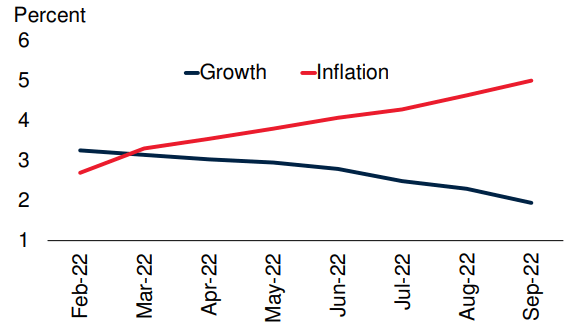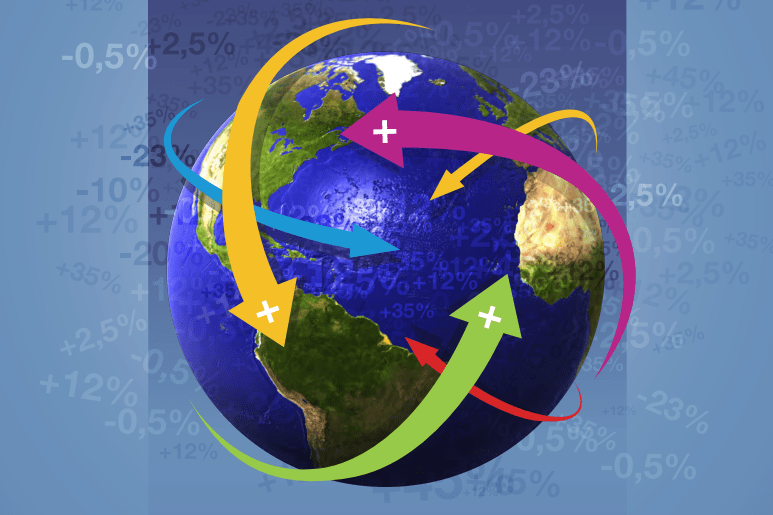Growth in the world economy slipped from an estimated 2.4%, at a seasonally adjusted quarterly rate, in the first quarter to an anemic 0.1% in the second quarter.
Since then, according to the World Bank, multiple indicators of economic activity have deteriorated along with tightening global financial conditions and a sharp drop in consumer confidence.
At the same time, political risks remain present mainly due to the escalating conflict between Russia and Ukraine, tensions in U.S.–China medium-term relations, uncertainty about government instability in Europe and other local geopolitical risks.
Global growth and inflation forecasts for 2023

From another angle, rising U.S. interest rates, concerns about global growth and the flight to safety drove the dollar higher against other global currencies later in the period, adding a further headwind to U.S. multinationals’ profits from the translation of foreign earnings into dollars.
The Federal Reserve’s (Fed) task of bringing inflation back to its 2% target without undermining the strong employment backdrop and precipitating a recession underscored the prevailing uncertainty about the macroeconomic outlook.
World economy
The PMI global composite manufacturing index contracted for the second consecutive month in September, led by weakness in advanced economies (especially in the eurozone), as elevated uncertainty and high energy prices dented confidence.
The global Sentix index fell sharply in October, reaching its lowest level since the 2020 global recession, and the economic expectations sub-index continued to plummet toward lows last seen during the global financial crisis.
Two years after the 2020 pandemic-induced global recession, the global economy is again facing significant challenges.
Rapidly deteriorating growth prospects amid the war in Ukraine, high inflation and tightening financial conditions have heightened concerns about an impending global recession, a contraction in global GDP per capita.
There have been five global recessions since 1970: 1975, 1982, 1991, 2009 and 2020.
The World Bank indicates that each was characterized by widespread weakness in multiple indicators of global activity as a result of simultaneous recessions in many countries.
In addition to the five global recessions, the world economy experienced three recessions since 1970, in 1998, 2001 and 2012.
These were driven primarily by financial stress concentrated in certain groups of countries.
During each of these recessions, the world economy avoided a contraction in per capita income, but experienced anemic GDP growth.
![]()

